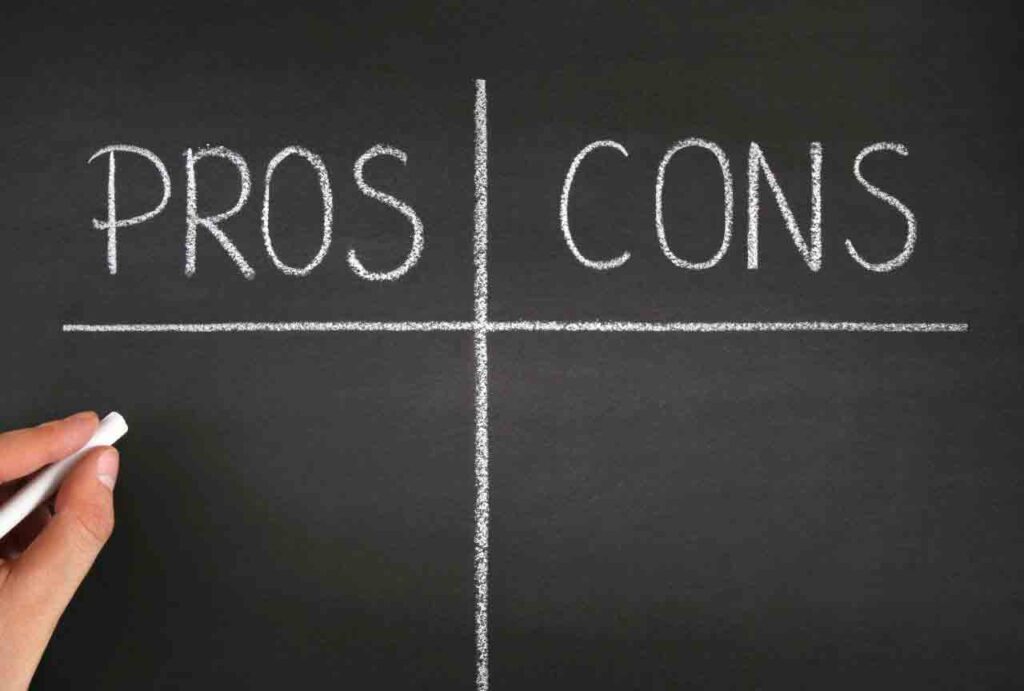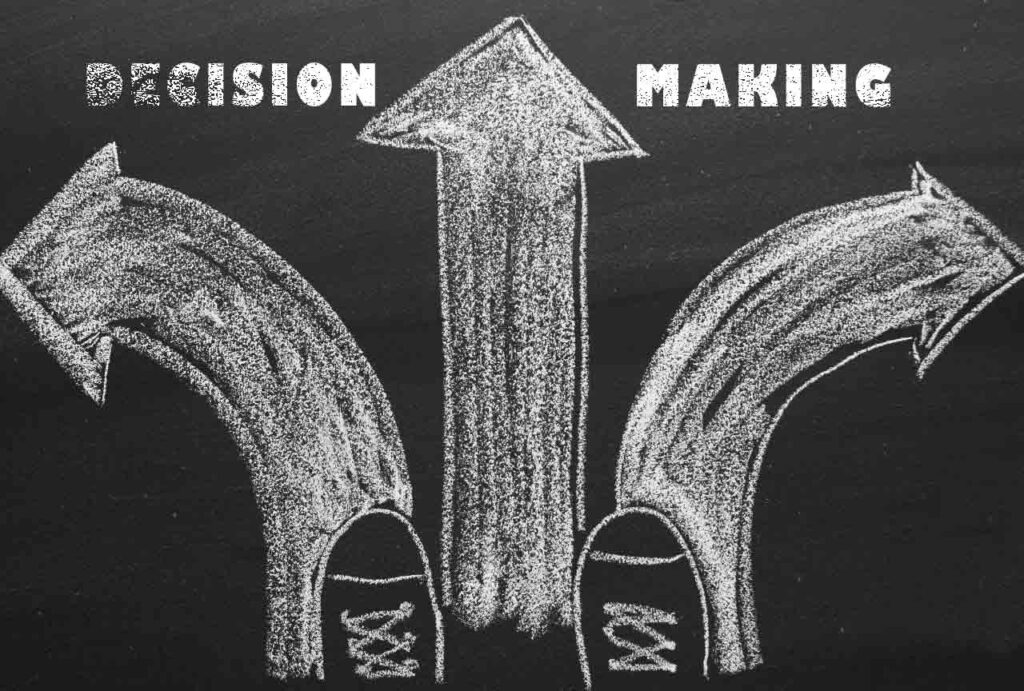Struggling to make a decision can feel overwhelming, especially when faced with equally good options or the fear of potential consequences. The uncertainty can create stress, leaving you unsure of the right path to take. This is a common challenge that can impact both personal and professional aspects of life.
The inability to decide often stems from overanalyzing, fear of making the wrong choice, or being torn between competing priorities. However, decision-making doesn’t have to be paralyzing. By learning practical techniques, you can weigh your options with clarity, reduce the stress of uncertainty, and choose a course of action that aligns with your goals and values.
9 Things to Do When You Can’t Make a Decision
1. Understand Why You’re Struggling to Decide
The first step in overcoming indecision is identifying the root cause of your struggle. Without understanding why making a decision feels difficult, it becomes harder to move forward. Several common reasons may explain this hesitation: fear of failure, lack of clarity about the options, or overthinking.
Start by asking yourself key questions:
- What is holding me back from making this decision?
- Am I afraid of the potential outcome or consequences?
- Do I feel I don’t have enough information?
- Are the options too similar, making it hard to choose?
Write down your thoughts. Putting your concerns on paper can make them more tangible and manageable. If fear of failure is the issue, consider whether you’re placing too much pressure on yourself for the decision to be perfect. If it’s lack of clarity, it might indicate you need more time or information to assess your options.
Once you’ve pinpointed the cause, address it directly. For example, if overthinking is an issue, set a time limit for analysis. If fear of consequences is the problem, remind yourself that many decisions can be adjusted later.
2. Define Your Core Values and Goals
Decision-making becomes easier when you align your choices with what truly matters to you. Core values and goals act as a compass, providing direction and clarity. Without these, decisions may feel arbitrary or disconnected from your long-term objectives.
To define your core values, ask yourself:
- What principles guide my life and actions?
- What do I prioritize above everything else (e.g., family, career growth, financial stability, personal happiness)?
Make a list of 5-10 values that are most important to you. Next, identify your short-term and long-term goals. Write these down as well to have a clear picture of what you are striving for.
When faced with a decision, evaluate how each option aligns with these values and goals. For instance, if personal growth is a priority, consider which choice offers more opportunities for learning and development. This alignment ensures your decision feels meaningful and authentic.
Take time to revisit these values and goals regularly, as they can evolve. By staying connected to them, you’ll have a stronger foundation for making decisions with confidence.
3. Gather All Relevant Information
Indecision often arises when you don’t feel informed enough about the available options. Gathering accurate and complete information is a critical step toward making an educated choice.
Start by identifying what you need to know:
- What are the key details about each option?
- Are there any risks or potential downsides?
- What benefits or opportunities do they offer?
Organize this information in a clear format, such as a table or bullet points, to compare the options side by side. Focus on facts rather than assumptions to avoid unnecessary bias.
While it’s important to gather sufficient information, avoid getting stuck in the trap of over-researching. Set a limit on the time you’ll spend collecting data to ensure it doesn’t delay the decision-making process.
If certain aspects of the decision remain unclear, reach out to trusted sources for advice or further clarification. This could include professionals with expertise in the area, articles from reliable sources, or people who have faced similar decisions.

Also Read: 55 Small Steps Quotes To Inspire You To Take Action Now
4. Use a Pros and Cons List
A pros and cons list is one of the most straightforward yet powerful tools for making decisions. It provides a clear and organized way to evaluate the potential benefits and drawbacks of each option. When done properly, it helps clarify which choice is more aligned with your needs, values, and goals.
Steps to Create a Pros and Cons List:
- Write Down Your Options: Start by clearly stating the decision you need to make and listing the options available to you.
- Divide a Page into Two Columns: Create one column for “Pros” (advantages) and one for “Cons” (disadvantages).
- List Advantages and Disadvantages:
- Be specific and objective.
- Include factors such as time, effort, costs, risks, and potential benefits.
- Consider both short-term and long-term implications.
- Assign Weight to Each Point: Not all pros and cons carry the same importance. Assign a value (e.g., 1–5) to reflect the significance of each factor.
Evaluate the Results:
After completing the list, compare the total weights of the pros and cons for each option. Focus on the key points that matter most to your goals and values. Avoid overanalyzing small or trivial details that don’t significantly impact the decision.
By seeing the pros and cons laid out, you can make a more balanced and confident choice, reducing uncertainty.
5. Try the “Worst-Case Scenario” Test
Fear of making the wrong choice often stems from worrying about the worst-case outcome. Confronting this fear head-on through a structured approach can help you overcome hesitation and gain perspective.
Steps to Use the Worst-Case Scenario Test:
- Define the Worst Possible Outcome for Each Option: Be realistic and specific. For example, consider financial loss, time wasted, or reputational impact.
- Assess the Likelihood of Each Outcome: Determine how likely the worst-case scenario is to occur. Often, we overestimate the probability of negative outcomes.
- Plan for Mitigation: Think about how you would handle the situation if the worst happened. Identify steps you could take to minimize harm or recover quickly.
Ask Yourself Key Questions:
- Is this outcome permanent, or could it be resolved over time?
- What resources, skills, or support could help you navigate the worst-case scenario?
- Does the potential gain from this choice outweigh the risks?
By confronting and rationalizing your fears, you can shift your focus toward the benefits and opportunities of making a decision. This process builds confidence and reduces the anxiety associated with uncertainty.
6. Set a Deadline for Your Decision
Decisions often become more challenging when there is no clear timeframe for making them. Without a deadline, it’s easy to fall into the trap of procrastination or endless overthinking. Setting a firm deadline creates accountability and ensures progress.
How to Set a Realistic Deadline:
- Determine the Level of Urgency: Consider whether the decision needs to be made immediately or if you have time to deliberate.
- Set a Specific Date and Time: Choose a clear and achievable deadline. Avoid vague timelines like “soon” or “in a few days.”
- Break the Process into Steps: If the decision requires research or analysis, allocate time for each stage leading up to the final choice.
Stick to the Deadline:
- Use reminders or alarms to keep the timeline in mind.
- Share your deadline with a trusted friend or colleague who can hold you accountable.
- Avoid extending the deadline unless absolutely necessary, as this can lead to more stress.
Benefits of Deadlines:
Having a set timeframe prevents you from overanalyzing and creates a sense of urgency to act. It encourages you to focus on the information you have and trust your ability to make a sound decision.
7. Start Small by Testing Options
When faced with a major decision, starting small by testing your options can help reduce uncertainty and make the process more manageable. Testing allows you to explore potential outcomes on a smaller scale before committing to a final choice.
Steps to Test Your Options:
- Identify a Scalable Action: Look for ways to experiment with your choices without fully committing. For example, if deciding between two career paths, you might take a short-term course in one field to see how it aligns with your interests and goals.
- Set Specific Parameters: Define what you want to learn from the test. Be clear about the timeframe, resources, and effort you’re willing to invest.
- Evaluate the Results: After testing, assess how you feel about the option and whether it meets your expectations. Use this experience to inform your final decision.
Advantages of Starting Small:
- It minimizes the fear of failure by allowing you to test outcomes with lower stakes.
- You gain valuable insights that can clarify which option aligns better with your values, goals, and priorities.
- This approach can help you move forward without the pressure of an all-or-nothing commitment.
8. Use Intuition and Gut Feelings
While logic and analysis play an essential role in decision-making, your intuition can offer valuable insights that shouldn’t be ignored. Gut feelings often arise from subconscious patterns and past experiences, providing guidance when data alone isn’t enough.
How to Tap Into Intuition:
- Pause and Reflect: Take a moment to focus on your internal response to each option. Notice how you feel emotionally and physically.
- Ask Yourself Key Questions:
- Does this option feel right or wrong?
- Are you hesitating because of genuine concerns or fear of change?
- Which choice aligns with what feels meaningful to you?
- Combine Intuition with Logic: Use intuition as a complement to the facts and analysis you’ve gathered. Trust your instincts but ensure they’re balanced with rational evaluation.
Benefits of Trusting Your Gut:
- It allows you to tap into subconscious knowledge that logic may overlook.
- It can provide clarity when you’re weighing two seemingly equal choices.
- Intuition often reflects your core values, helping you choose what feels most authentic.
By listening to your gut feelings while remaining grounded in factual analysis, you can make decisions that align with both your head and heart.
9. Accept That No Decision Is Perfect
One of the biggest obstacles to decision-making is the expectation that you must make the “perfect” choice. In reality, every decision comes with trade-offs, and no option is without risks or flaws. Accepting this truth can free you from the pressure of seeking perfection and empower you to move forward.
Steps to Embrace Imperfection:
- Shift Your Perspective: Understand that the goal is not to eliminate all risks or uncertainties but to choose the best possible option given the information and resources you have.
- Focus on Progress, Not Perfection: Remind yourself that making a decision—even if it’s not flawless—allows you to move forward and learn from the experience.
- Commit to Your Choice: Once you’ve made a decision, focus on making it work rather than second-guessing yourself. Adjust and adapt as needed, but avoid dwelling on what might have been.
Why Acceptance Matters:
- It reduces the stress and anxiety of decision-making.
- It encourages you to take action instead of remaining stuck in indecision.
- It helps you grow by recognizing that every choice is an opportunity to learn and improve.
By letting go of the unrealistic expectation of perfection, you can make decisions with greater confidence and clarity. This mindset shift will enable you to move forward and make the most of your choices, regardless of the outcome.Struggling to make a decision can feel overwhelming, especially when faced with equally good options or the fear of potential consequences. The uncertainty can create stress, leaving you unsure of the right path to take. This is a common challenge that can impact both personal and professional aspects of life.
The inability to decide often stems from overanalyzing, fear of making the wrong choice, or being torn between competing priorities. However, decision-making doesn’t have to be paralyzing. By learning practical techniques, you can weigh your options with clarity, reduce the stress of uncertainty, and choose a course of action that aligns with your goals and values.



